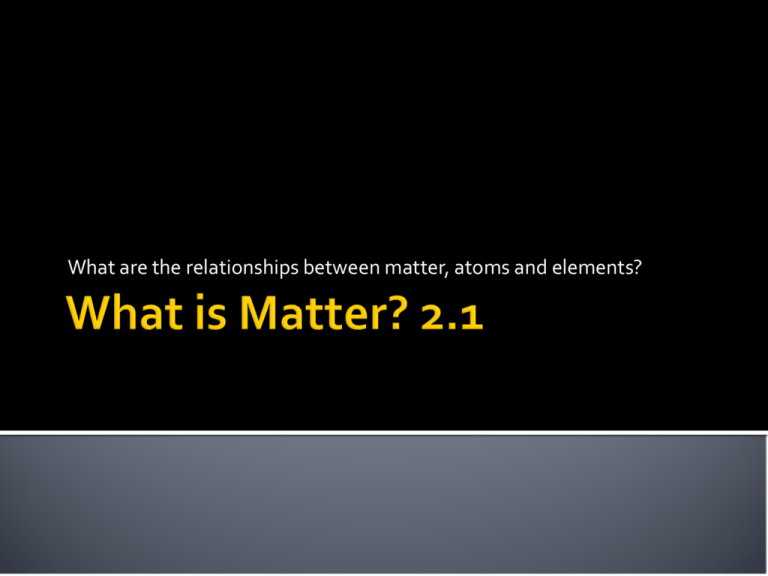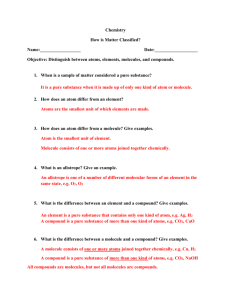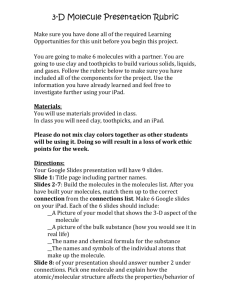What is Matter? 2.1
advertisement

What are the relationships between matter, atoms and elements? What is Chemistry? The scientific study of the composition, structure, and properties of matter and the changes that matter undergoes. What does that mean? That Chemistry is the study of what things are made of and how you can combine things together. Everything, and I do mean everything, that has mass and volume (you know what those are right!) is made of matter. Matter: anything that has mass and takes up space. So, your notes are made of matter. The breath you are taking (took?) is made of matter and you are made of matter. Mater is made up of hundreds of millions or billions or even trillions of atoms. It all depends on the density of the matter. Atoms: the smallest unit of an element that maintains the properties of that element. Element: a substance that cannot be separated into simpler substances by chemical means. Many of the things you use every day are made up of different elements. Your pencil has graphite for you to write with. It is a form of carbon, similar to those found in a diamond. Take some graphite, a little pressure (more like a LOT) add some heat (again, a LOT) and poof, you have a diamond! If you combine two or more elements together you create a compound! Compound: a substance made of atoms of two or more different elements that are chemically combined. When elements form compounds, these compounds will have different properties than the elements that make it up. When atoms combined together to form all the different compounds, they create molecules. Molecule: the smallest unit of a substance that keeps all the physical and chemical properties of that substance. When molecules are created, say a molecule of water, the number of atoms and the type of atoms, will ALWAYS be the same in EVERY molecule. Molecules can be made up of different types of atoms or the same type of atom. The atoms that go into a molecule are like a recipe, to get what you want, you need to put in the correct ingredients in the right amounts. Just like the recipes you have at home are written down (somewhere right?), molecules have a written recipe. The Chemical Formula is the written recipe for the molecule you are trying to make, or already have. Chemical Formula: A combination of chemical symbols and numbers to represent a substance. H2O C6H12O6 NaCl CO2 NH3 H3C6H5O7 In science, you will learn that MANY words you know now will have a different meaning from what you have learned. One of these is the word pure. In science we use it when referring to some substance, that is made up of all one type of atom or molecule. Pure Substance: a sample of matter, either a single element or a single molecule, that has definite chemical or physical properties. So that means any thing that has two or more different types of molecules, is not a pure substance. Mixture: a combination of two or more substances that are not chemically combined. So pure grape juice, is not pure when we are using science terms!









